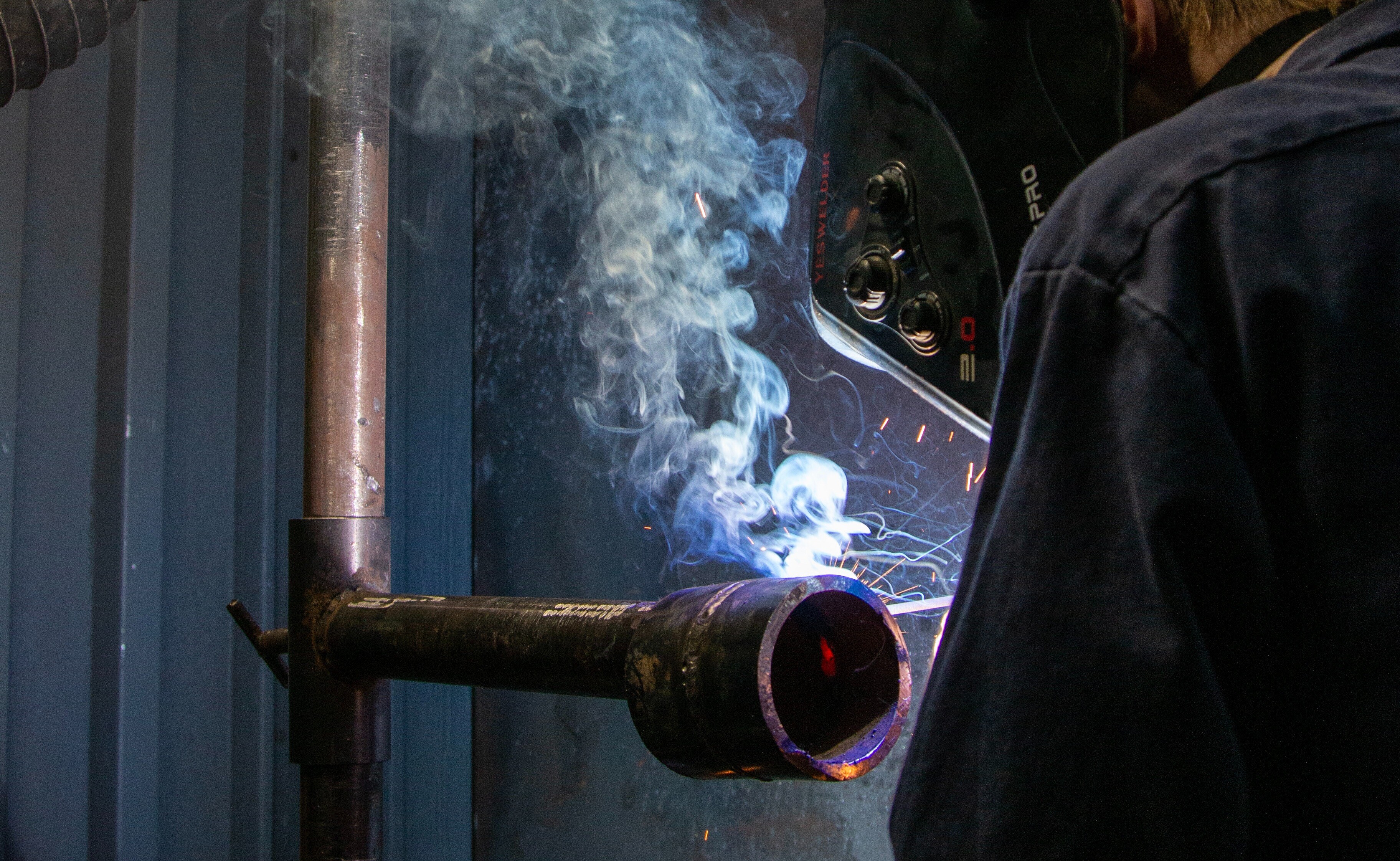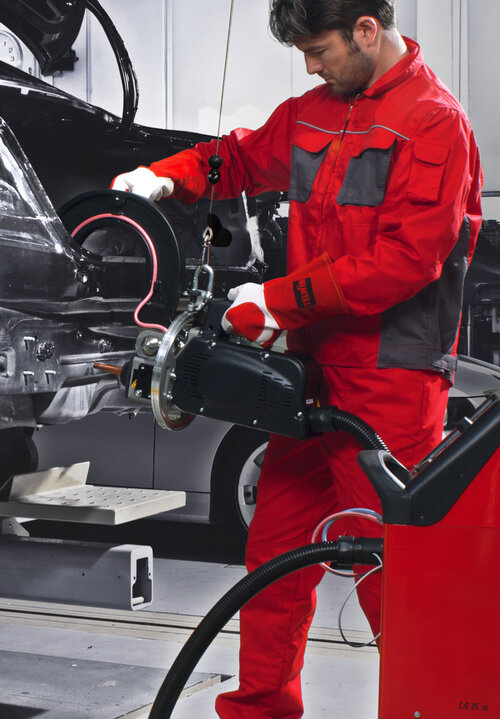Simple weld inspection practices shared by Montana Mobile Welding and Repair
Wiki Article
All About Welding: Secret Insights Into Techniques and Best Practices for Success
Welding incorporates a variety of techniques, each matched for certain products and applications. Understanding these techniques, such as GMAW, SMAW, and TIG, is vital for achieving optimal outcomes. Additionally, the ideal tools and safety practices can not be ignored. As prep work and troubleshooting play important duties in the welding procedure, grasping these components can significantly improve the quality of the end product. What are the essential factors that guarantee an effective weld?Comprehending Different Welding Strategies
Welding methods incorporate a variety of approaches, each fit to particular applications and products. Among the most usual techniques are Gas Metal Arc Welding (GMAW), Secured Steel Arc Welding (SMAW), and Tungsten Inert Gas Welding (TIG) GMAW, likewise referred to as MIG welding, is popular for its rate and adaptability, making it perfect for thin products. SMAW, or stick welding, is preferred for its simplicity and effectiveness in outdoor environments, specifically with thicker metals. TIG welding uses precision and control, making it ideal for intricate job and non-ferrous metals (Montana Mobile Welding and Repair Belgrade Welding). Each strategy has its special advantages and considerations, enabling welders to pick the ideal method based upon the project's demands, product type, and desired end results. Understanding these methods is essential for successful weldingCrucial Welding Equipment and Devices
While various welding techniques need details skills, the best devices and devices are just as important for accomplishing top quality outcomes. Important welding devices consists of welding equipments, which differ depending upon the method-- such as MIG, TIG, or stick welding. Safety gear, including gloves, aprons, and safety helmets, guarantees safety and comfort during the procedure. Additionally, components and clamps assist secure products in area, ensuring precision in welds. Consumables like welding poles, cable, and protecting gas are likewise critical parts that influence the top quality of the weld. In addition, devices such as cutters and grinders promote surface area prep work and post-weld completing, adding to a specialist result. Purchasing premium devices ultimately enhances the efficiency and effectiveness of welding projects.Safety Practices in Welding
Proper security methods are vital in the welding market to protect employees from possible dangers. Welders have to use suitable personal safety devices (PPE), including headgears with correct shading, handwear covers, and flame-resistant clothes. Adequate air flow is essential to reduce direct exposure to dangerous fumes and gases generated throughout the welding process. In addition, workers should be educated in the appropriate handling of welding equipment to protect against mishaps. Fire precaution, such as maintaining flammable products away from the welding area and having fire extinguishers readily offered, are necessary. Normal assessments of equipment and work spaces can aid identify possible dangers prior to they result in crashes. By adhering to these security techniques, welders can create a safer working setting and reduce risks related to their profession.Preparing Materials for Welding
Preparing products for welding is an essential action that significantly affects the quality and integrity of the final product (Belgrade Fabrication). Correct prep work involves cleansing the surfaces to eliminate pollutants such as dust, oil, and corrosion, which can jeopardize the weld. Techniques such as grinding, sanding, or using solvents are generally utilized to achieve a clean surface area. In addition, guaranteeing that the materials fit together snugly is essential; spaces can lead to weak welds. It's additionally crucial to consider the positioning and positioning of the parts, as this will certainly affect the ease of welding and the last outcome. Lastly, picking the ideal filler material and making sure compatibility with the base metals is vital for accomplishing solid, resilient weldsTips for Getting High-Quality Welds
Achieving top quality welds needs interest to information and adherence to finest practices throughout the welding process. Proper joint preparation is essential, making sure surface areas are tidy and free from impurities. Selecting the proper filler material and welding technique based on the base metals is important for perfect bonding. Maintaining constant travel speed and angle while welding can protect against defects and promote uniformity. Additionally, controlling warmth input is crucial; extreme warmth can result in bending and deteriorated joints. If essential, consistently checking the welds during the process allows for prompt changes. Ultimately, utilizing appropriate post-weld therapies, such as cleansing and stress relief, can enhance the longevity and stability of the weld, inevitably ensuring an effective result.Troubleshooting Typical Welding Issues
Welding frequently provides difficulties that can influence the top quality and honesty of the final product. Typical concerns such as porosity, irregular weld beads, and getting too hot can occur, each requiring details repairing strategies. Understanding these troubles is important for welders to enhance their skills and accomplish excellent results.Porosity Troubles Discussed
Porosity can frequently be overlooked, it remains an important issue in welding that can compromise the integrity of a finished product. Porosity describes the presence of small gas pockets within the weld bead, which can lead and damage the joint to early failure. This issue commonly emerges from contaminants, wetness, or inappropriate shielding gas protection during the welding process. To alleviate porosity, welders should confirm that the base products are dry and clean, make use of appropriate protecting gases, and keep regular welding criteria. Consistently evaluating the tools and environment can additionally help recognize potential issues before they show up in the weld. Dealing with porosity effectively is crucial for achieving solid, sturdy welds that satisfy high quality standards.
Irregular Weld Beads
Inconsistent weld grains can significantly affect the quality and strength of a finished item. Various variables add to this concern, including inappropriate travel rate, wrong amperage setups, and inconsistent electrode angles. When the welder moves also promptly, a bead may show up narrow and lack infiltration, while relocating also gradually can cause too much build-up. Furthermore, making use of the incorrect amperage can lead to either damaging or excessive spatter, both of which concession weld integrity. The welder's technique, such as irregular lantern activity, can likewise cause uneven grain look. To minimize these troubles, welders need to concentrate on keeping steady, controlled movements and ensuring correct equipment setups to accomplish harmony in their welds. Uniformity is essential to attaining solid and reliable welds.Overheating and Warping Issues
Too much warm throughout the welding this post process can lead to considerable overheating and deforming concerns, impacting the architectural stability of the work surface. These troubles commonly manifest as distortion, which can jeopardize positioning and fit-up, making my review here more assembly challenging. Aspects adding to overheating include the option of welding criteria, such as voltage and take a trip rate, in addition to the sort of product being bonded. To mitigate these problems, welders must keep consistent travel speed and proper warmth input while keeping an eye on the workpiece temperature. In addition, preheating or post-weld heat treatment can help minimize tensions triggered by fast air conditioning - Montana Mobile Welding and Repair Fabrication. Routine assessment and adherence to finest methods are crucial in preventing overheating and ensuring the longevity and reliability of welded frameworksRegularly Asked Inquiries
What Are the Occupation Opportunities in the Welding Market?
The welding industry offers diverse job possibilities, consisting of settings as welders, teachers, engineers, and assessors. Experts can function in manufacturing, construction, aerospace, and auto markets, benefiting from strong demand and competitive wages in different roles.Just How Can I Improve My Welding Speed Without Sacrificing Top Quality?
To enhance welding rate without sacrificing quality, one need to exercise effective techniques, preserve devices, optimize setups, and enhance hand-eye coordination. Normal training and seeking responses can additionally substantially add to attaining faster, top quality welds.What Certifications Are Offered for Welders?
Numerous qualifications exist for welders, including those from the American Welding Society (AWS), the National Facility for Building And Construction Education and Study (NCCER), and various industry-specific organizations. These credentials boost employability and show ability proficiency.Exactly How Does Welding Influence the Residences of Metals?
Welding affects the buildings of steels by altering their microstructure, which can result in adjustments in toughness, solidity, and ductility. Heat input and cooling rates during the process substantially influence these material characteristics.Can I Bonded Dissimilar Metals Together?

Report this wiki page